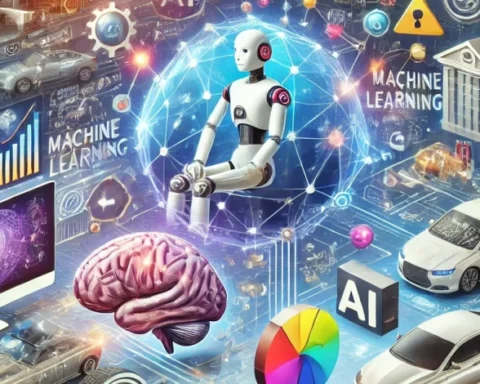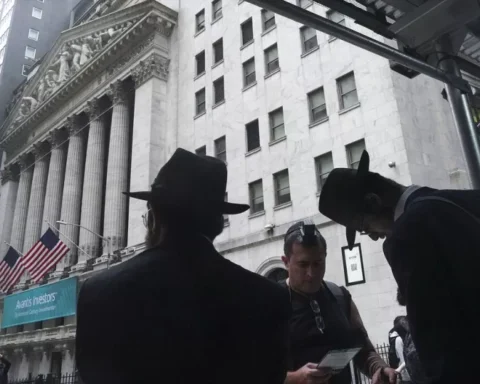The word communism has been dragged through history as a banner for human politics. However, its Latin origin, communis, means shared, as in belonging to all. Long before Marx or Lenin, this was not an ideology but a condition of existence. Everything that lives participates in some form of communion.
Strip away the human-centered narratives, and the root meaning of communism reveals something essential: life itself is communal.
The Living Commons
Every organism on Earth depends on relationships with others. Your body alone hosts over 100 trillion microorganisms, including bacteria, fungi, and archaea, which outnumber your human cells and support your health, digestion, and even cognition (Sender et al., 2016; Gilbert, Sapp, & Tauber, 2012). Without them, you would die within days. The same is true on a planetary scale: soil microbiomes enable agriculture; coral symbiosis sustains ocean life; and the collective respiration of forests and plankton keeps atmospheric balance.
This is not metaphorical communism, but biological communism: the sharing of energy, matter, and meaning across living systems. The Earth is a network of reciprocal exchanges. It is what Indigenous scholar Robin Wall Kimmerer calls a “covenant of reciprocity” between humans and the living world (Kimmerer, 2013, p. 383). Life does not compete first and cooperate second; instead, cooperation is the foundation from which complexity arises (Margulis & Sagan, 1995).
Anthropocentric Communism: The Great Reduction
So how did we lose sight of this truth? When Marx and his contemporaries in 19th-century Europe envisioned communism, they saw it through the lens of Western industrial civilization, viewing it as a way to fix human exploitation. In doing so, Marx fell into what Courtney Martin (2016) calls the “reductive seduction”: reducing the living world to human systems and being captivated by the idea that these systems alone can repair harm. His analysis of class struggle was strong, yet it remained stuck in the human realm, where he aimed to free the worker but not the Earth. The world itself stayed external, a resource to be managed rather than a partner in existence.
This is the anthropocentric trap: the belief that justice, ownership, and community exist only within the human world. In this perspective, “the commons” becomes farmland, factory, or market, rather than forest, river, or mycorrhizal network. The living world is sidelined, reduced to “natural resources.”
Indigenous philosophies have always rejected that separation. The Haudenosaunee (Iroquois) speak of all our relations; Māori ethics focus on whanaungatanga or kinship and relational responsibility; and Sámi reindeer herders describe land and life as siida, a shared way of being (Coulthard, 2014; Kimmerer, 2013; Mustonen, 2019). These are not primitive communisms but ecological communalisms, which are living systems of governance grounded in reciprocity rather than possession.
Toward a Planetary Definition
Returning to its Latin origins, we observe “erant illis omnia communia” or “they held all things in common” (Acts 4:32), a principle far deeper than human society: the recognition that existence itself is relational. Life is not an assemblage of separate individuals; it is the outcome of continuous cooperation among species, elements, and forces. As biologist Lynn Margulis (1998) argued, evolution itself is a history of symbiosis, not competition.
A revised definition, then, might read:
Communism (21st century definition): the natural condition of interdependence within the living Earth, in which all beings share in the exchange of energy, matter, and care that sustains existence. It recognizes that no form of life can thrive outside the commons of being.
Such a framing collapses the false dichotomy between human and more-than-human worlds. It reframes ownership as stewardship, labor as participation, and wealth as the vitality of the whole.
Reclaiming the Word
To talk about communism today is not to resurrect a failed political system but to recover a forgotten truth. The Earth itself is communist — not in ideology, but in structure. From microbial ecologies to atmospheric regulation, everything depends on the commons of life.
To live justly, then, is to live in common. Not through coercion or conformity, but through recognition — that our survival depends on the health of the shared systems we inhabit. Without that awareness, every revolution remains partial, every justice incomplete.
References
Coulthard, G. S. (2014). Red Skin, White Masks: Rejecting the Colonial Politics of Recognition. University of Minnesota Press.
Gilbert, S. F., Sapp, J., & Tauber, A. I. (2012). A symbiotic view of life: We have never been individuals. The Quarterly Review of Biology, 87(4), 325–341.
Kimmerer, R. W. (2013). Braiding Sweetgrass: Indigenous Wisdom, Scientific Knowledge, and the Teachings of Plants. Milkweed Editions.
Margulis, L., & Sagan, D. (1995). What Is Life? University of California Press.
Margulis, L. (1998). Symbiotic Planet: A New Look at Evolution. Basic Books.
Martin, Courtney. “The Reductive Seduction of Other People’s Problems.” Bright Magazine, 2016 (original publication).
Mustonen, T. (2019). Reclaiming the indigenous Arctic. Ambio, 48(1), 1–11.
Sender, R., Fuchs, S., & Milo, R. (2016). Revised estimates for the number of human and bacterial cells in the body. PLoS Biology, 14(8), e1002533.
Source: https://www.resilience.org/stories/2025-10-21/lets-talk-about-communism/






